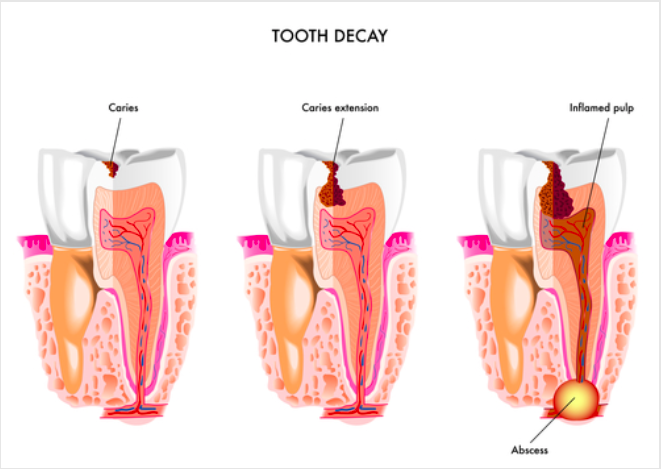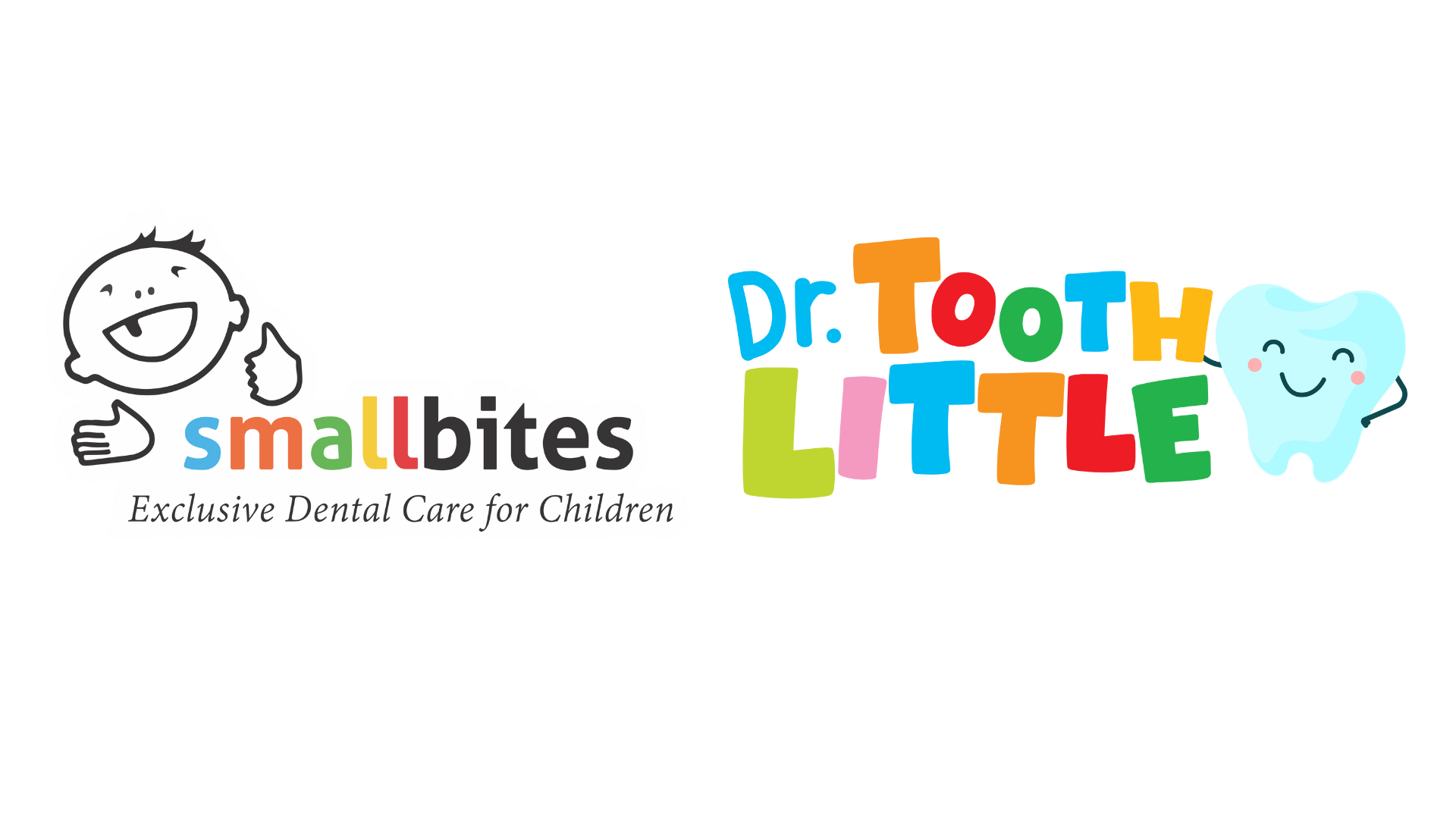
Tooth decay is seen in most children today. Their exposure to all kinds of foods, snacking, erratic time schedules and more importantly – the fact that they don’t clean/gargle their mouth after every meal, makes them prone to disease and damage. Tooth decay is a gradual process. It can be stopped and regressed at any stage provided you know what these stages are. If you understand these five stages and intervene with the right remediation, it will save you and your child from a lifetime of dental pain.
The 5 Stages of Tooth Decay
Stage 1: White Spots.
Stage Two: Enamel Decay.
Stage Three: Dentin Decay.
Stage Four: Involvement of The Pulp.
Stage Five: Abscess Formation.
Stage Six: Tooth Loss.
Stage Five: Abscess Formation.
Stage Five: Abscess Formation.
STAGE 1 – WHITE SPOTS :
During the first stage, the tooth begins to gradually show the effects of acids and sugar attacks. Light white spots begin to appear just below the enamel surface. In children they most often occur on the molars (at the back of the mouth) and suggest initial demineralization of teeth. Dental examination catches these spots, which regular parental examination cannot. Treatment can intervene at this stage, without further irreversible damage.
STAGE 2 – DECAY OF ENAMEL :
The upper surface of teeth also called the enamel, begins to be attacked during this stage. Contrary to what people think, erosion of the enamel happens from inside outwards, so damage isn’t visible on the teeth at the start. Once the black cavity breaks through the enamel is when damage is visible, and there’s no alternative except for correcting the damage with clean-up and filling.
STAGE 3 – DECAY OF DENTIN

The cavity in a child’s tooth often becomes obvious now. If for some reason all the previous stages have been missed by you, at this stage is when slight pain begins to start. This means that the cavity is beginning to eat away at the second level of dental material; the dentin. A filling at this stage can still stop spread of bacteria going towards the dental pulp, which is the most crucial component of teeth.
STAGE 4 – PULP INVOLVEMENT
Cavities that reach the tooth pulp cause much pain and discomfort. Missing all the previous signs and stages and landing up in this stage means, you will be confronted with a child screaming their lungs out in pain. This stage is serious and just cannot be ignored any longer. Root canal and cleaning up of the pulp is the only option to ensure remainder of the tooth is intact, and to prevent a full extraction.
STAGE 5 – PUS FORMATION
The most critical stage and one that is fraught with immense pain, the fifth stage means that the infection has breached the root and exited outside the tooth structure. It may then get into surrounding soft tissue or eat up the bone. Pain is very severe, accompanied by swelling, sensitivity and difficulty in eating or swallowing. In children, because bones are softer this pus/abscesses can be dangerous if not treated immediately. Delay is not an option. Root canal or even complete tooth removal may be the only resort.
Cavities aren’t therefore harmless damage and never happen suddenly. They build up and break tooth structure over a period of time. Taking your child to the dentist is the key in ensuring any damage is picked up and immediately reversed. Regular dental checkups over intervals can keep their teeth healthy.
At Small Bites Kids Clinic Bangalore , we provide the highest quality Dental Decay Management Treatments at an affordable cost. To know more about our Dental Decay Management Treatments or to book an appointment, click here.

